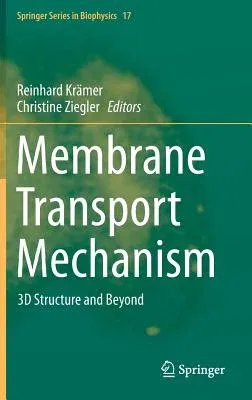Membrane Transport Mechanism: 3D Structure and Beyond (2014)Hardcover - 2014, 27 March 2014

Qty
1
Turbo
Ships in 2 - 3 days
In Stock
Free Delivery
Cash on Delivery
15 Days
Free Returns
Secure Checkout

Part of Series
Springer Biophysics
Part of Series
Springer Series in Biophysics
Print Length
272 pages
Language
English
Publisher
Springer
Date Published
27 Mar 2014
ISBN-10
364253838X
ISBN-13
9783642538384
Description
Product Details
Book Edition:
2014
Book Format:
Hardcover
Country of Origin:
NL
Date Published:
27 March 2014
Dimensions:
23.37 x
16 x
2.29 cm
Genre:
Science/Technology Aspects
ISBN-10:
364253838X
ISBN-13:
9783642538384
Language:
English
Location:
Berlin, Heidelberg
Pages:
272
Publisher:
Weight:
521.63 gm